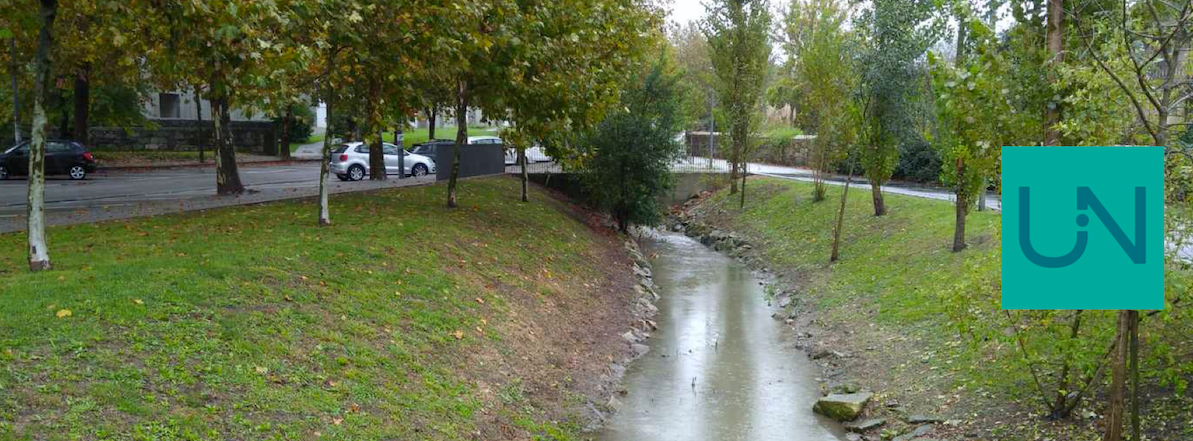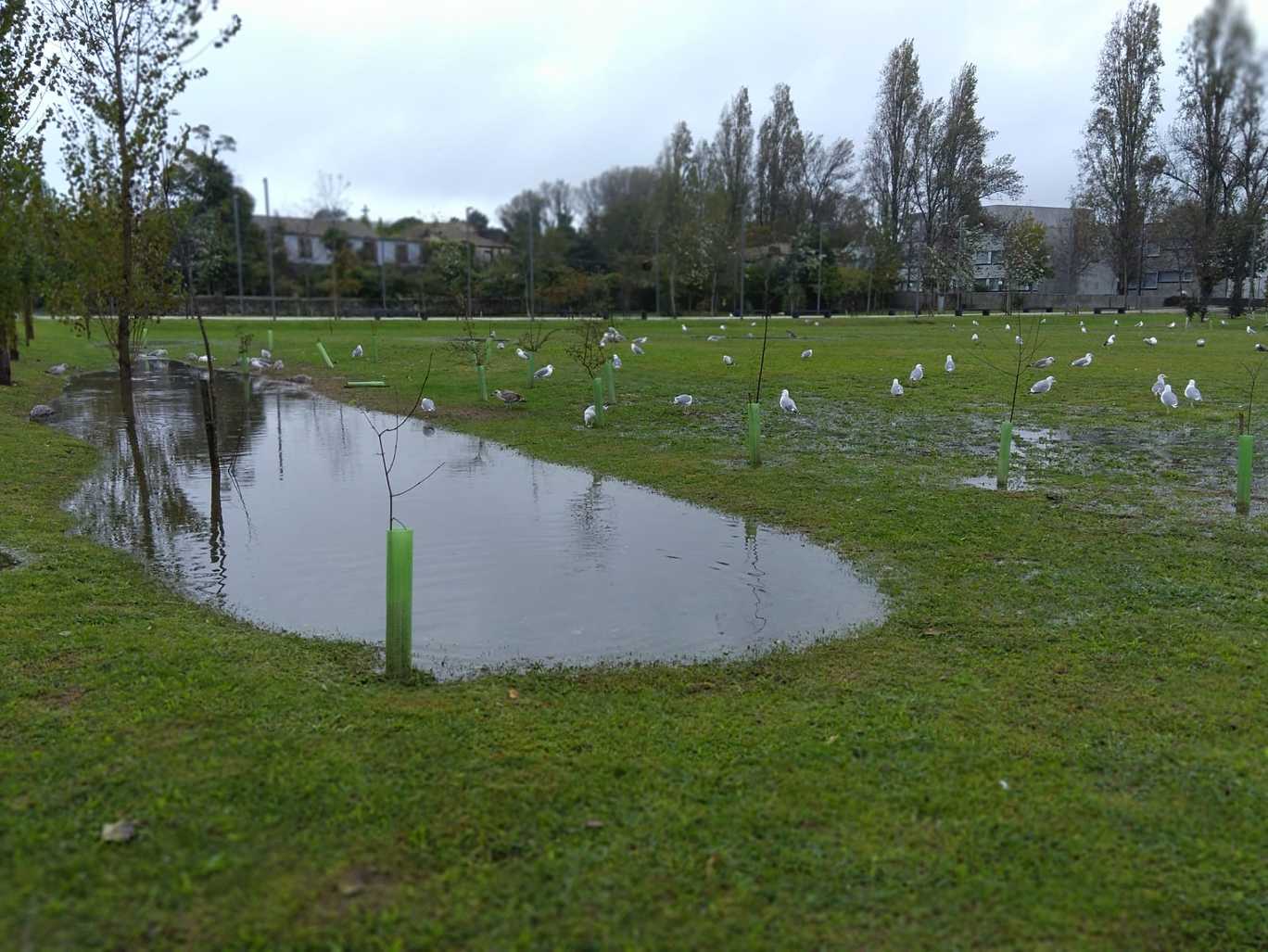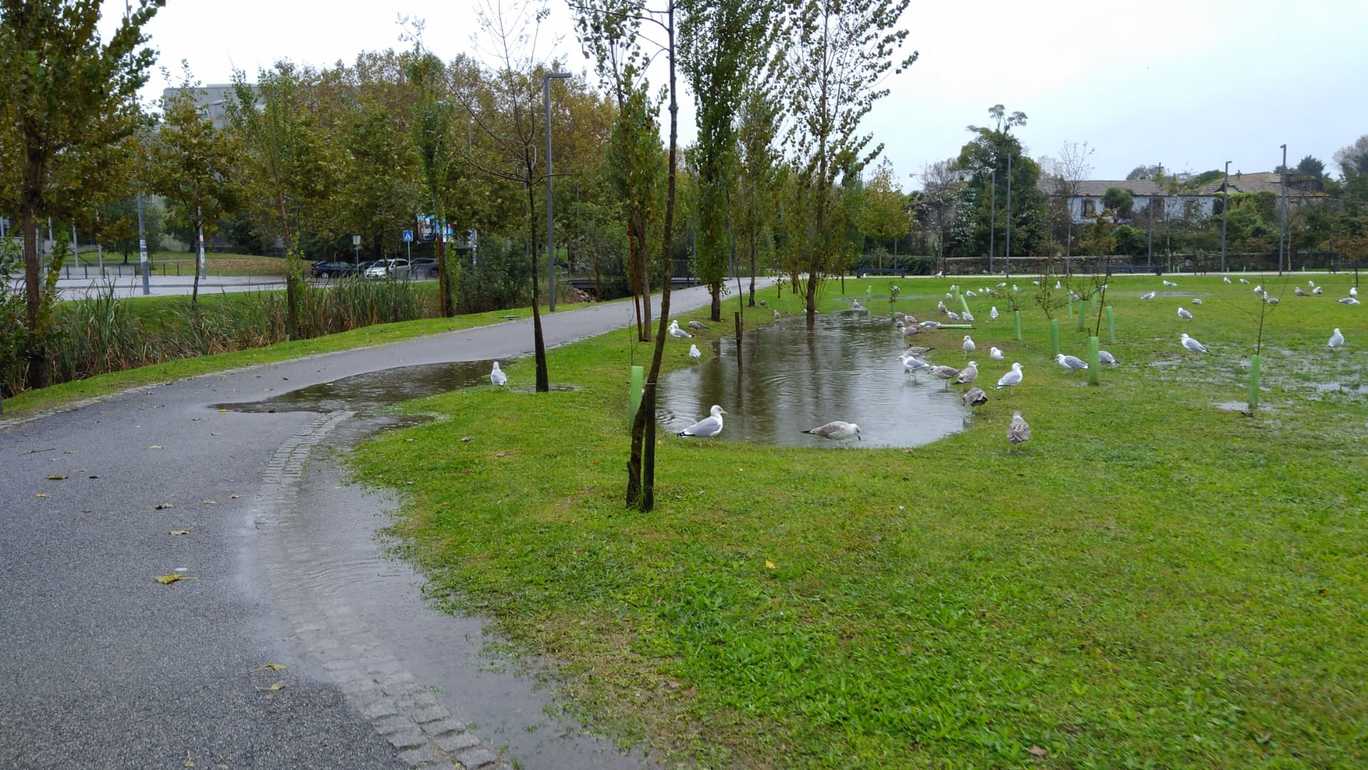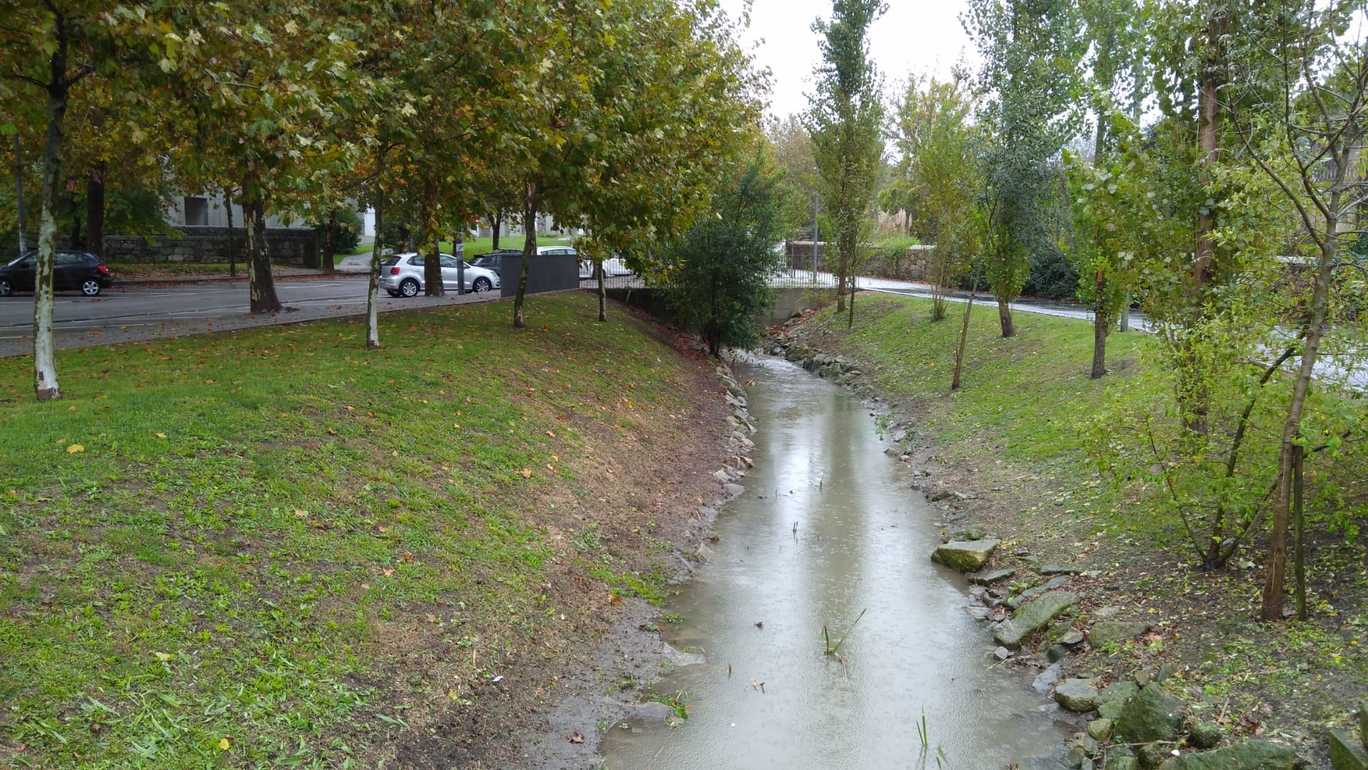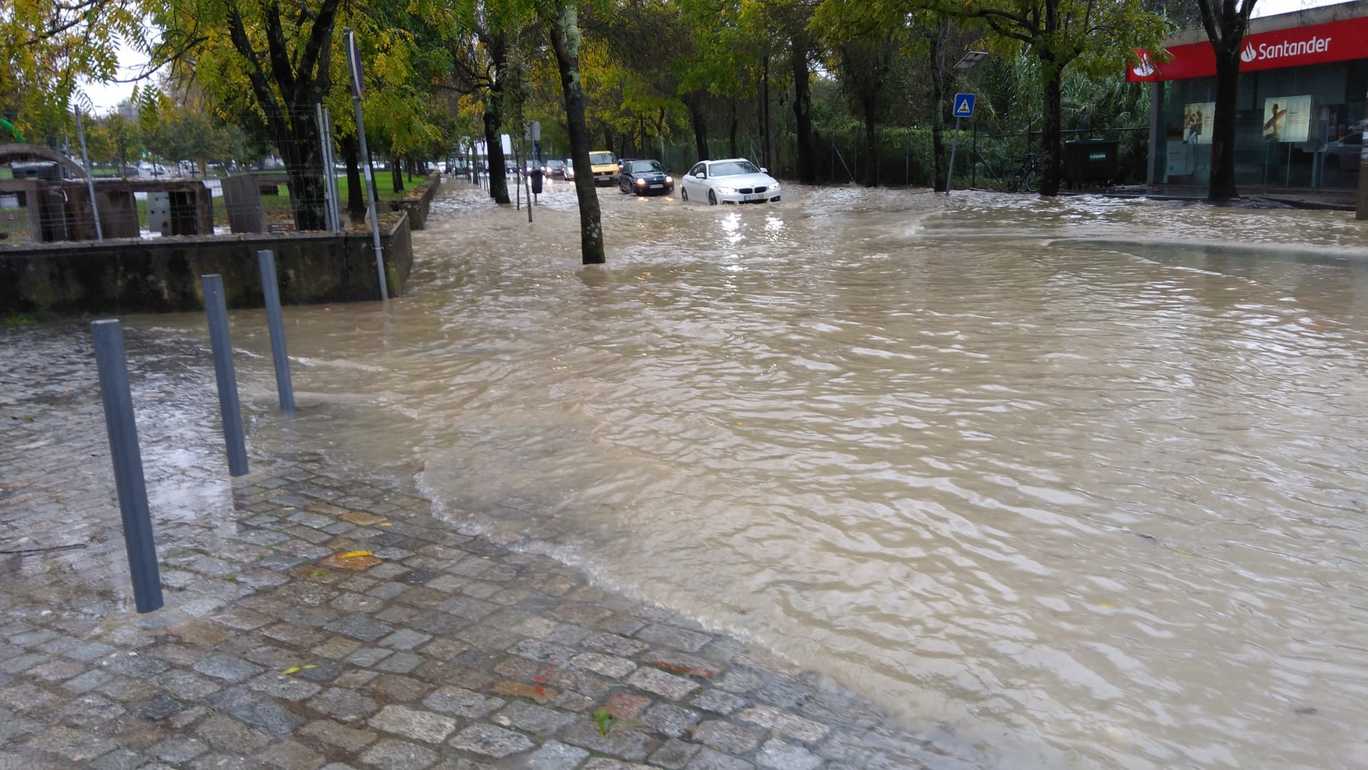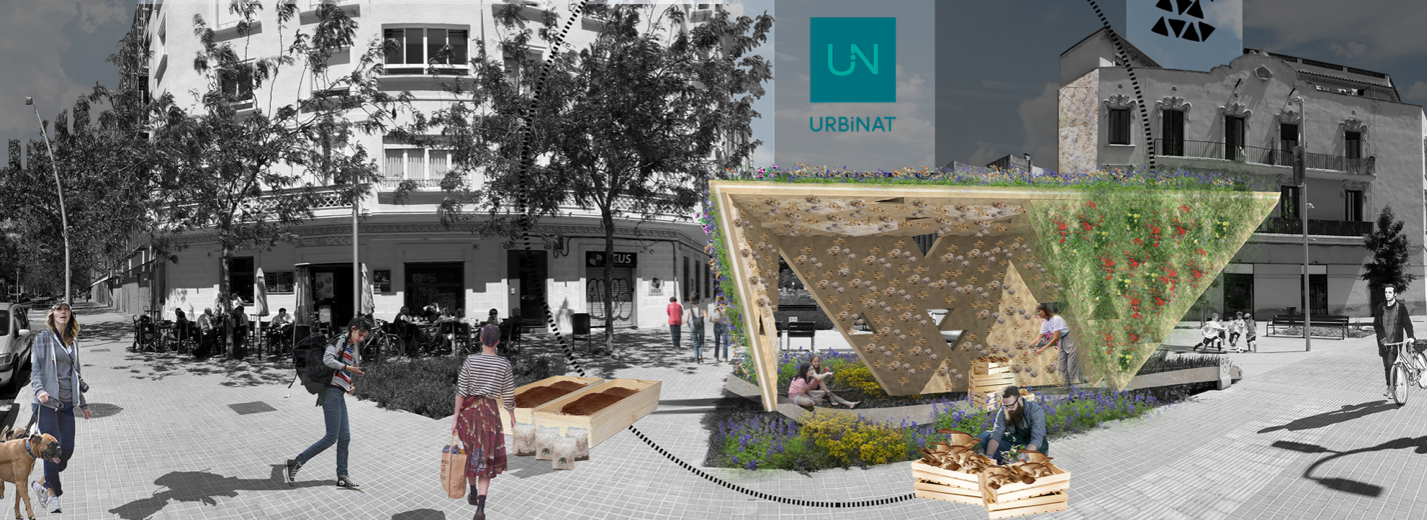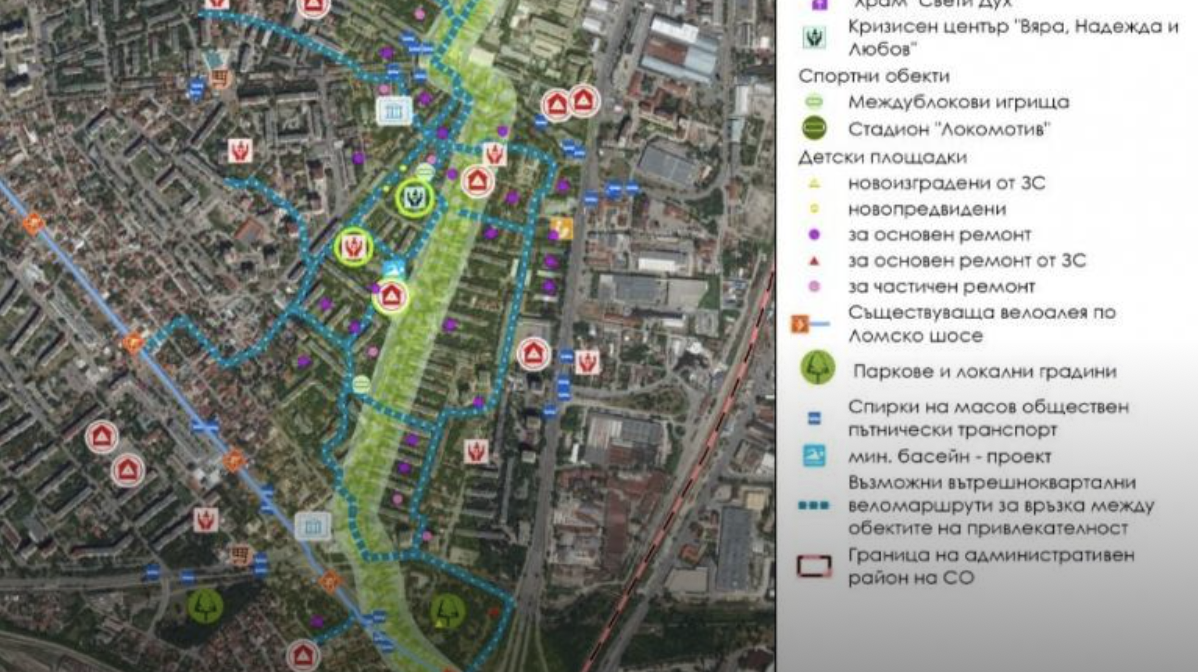On 19th October 2019 the city of Porto was affected by a torrential rainfall. Over the course of the day there was 130mm of rainfall, 40mm of which fell in less than an hour. The rainfall for this single day can be compared with the average that is normally registered for the whole month of October. This kind of rainfall occurs on average once every 20 years.
The images that follow depict a site that is often showcased as a Nature-Based Solution (NBS) for watercourse restoration. We would like to share with you, how this site endured this extreme event.
This project was designed in such a way that all rainwater is managed (stored, retained and infiltrated) on site. There is a system of interconnecting water retention basins, done exclusively through landform design, where all surface and subsurface water is lead and conducted to these low points. The retention basins have a storage capacity of 2680m3 of water, calculated for the 20 year storm event.
If this amount of water is exceeded, then a system of hydraulic bypasses will move the water between basins, eventually sending the water to the re-naturalised watercourse, whose section is calculated to allow for an added retention of up to 5000m3, that will be slowly released over a larger period of time, thus diminishing the peak of water concentration (see video bellow).
The main lawns also feature a 30cm sand and gravel sublayer, largely contributing to the volume of the water infiltration. The project also features a large number of trees whose foliage stores and retains a significant volume of rain water.
When this project was designed, we knew that this was a problematic area, with a highly impermeabilized watershed, affected by the hazards of a heavy rainfall. The site was designed based on the principles of natural drainage and the use of green structure to put as much water into the ground as possible, to retain and slow its movement.
This area was primarily designed as a park, with a deep social and ecological function, and it works this way for 364 days a year. It is used by the academic community, but also by the citizens of Porto. But on that exceptional event that happens very rarely, it provides a very critical function. The water that was managed by this site aided in the reduction of possible flood problems downstream.
The stormwater management system in this park is way cheaper and more cost-effective that any stormwater management system based on heavy pipes and infrastructures. It was interesting to see that the road next to the park, with its pipe infrastructures got overflowed, while the park endured.
The water that fell on this site will also feed the underground aquifers and will latter fead the headwaters of the watercourses. This is clean and potable water, its path to the ocean should be delayed as much as possible.
Lastly, there is a need to point out the function of the park as a system. This park does not fit into a single of our categories of NBS’s. The watercourse alone encompasses a ‘watercourse restoration’, a ‘stormwater management’, and even an ‘urban forest’ (the banks we planted with authoctonous plants). Things work better in systems, and the synergetic effect is larger than the sum of its counterparts. And that is what we are trying to achieve with the healthy corridor concept.
A project this complex required a large team, so it is only fair that their names are mentioned in this post.
- Paulo Farinha Marques, Coordination and landscape architecture
- José Miguel Lameiras, Project management and landscape architecture
- Gonçalo Nunes de Andrade, Landscape architecture
- Luís Guedes de Carvalho, Landscape architecture
- Nuno Costa, Landscape architecture
- Jorge Barbosa, Landscape architecture
- Ana Lindeza, Irrigation
- Francisco Guedes de Carvalho, architecture
- Rodrigo Maia, Civil engineering – hydraulics
- Hélder Magalhães, Civil engineering – hydraulics
- Juliana Mendes, Civil engineering – hydraulics
- Cardoso Teixeira, Civil engineering
- Susana Sousa, Civil engineering
- João Cunha, Civil engineering
- António Murta, Civil engineering
- Daniel Moreira, Electrical engineering
Special thanks to Manuel Ribeiro, also an URBiNAT member from the Municipality of Porto, who took all the photos after the rainfall.
You may be interested to read about our NBS report on the Rain Gardens and Stormwater Management system developed by URBiNAT Parter SLA Architects.


